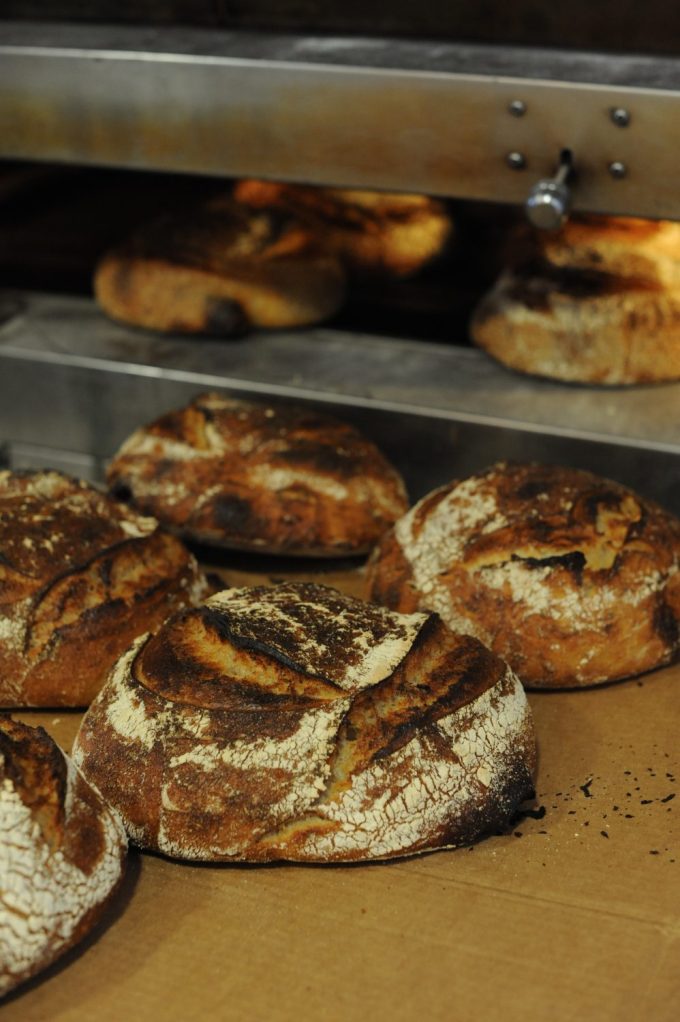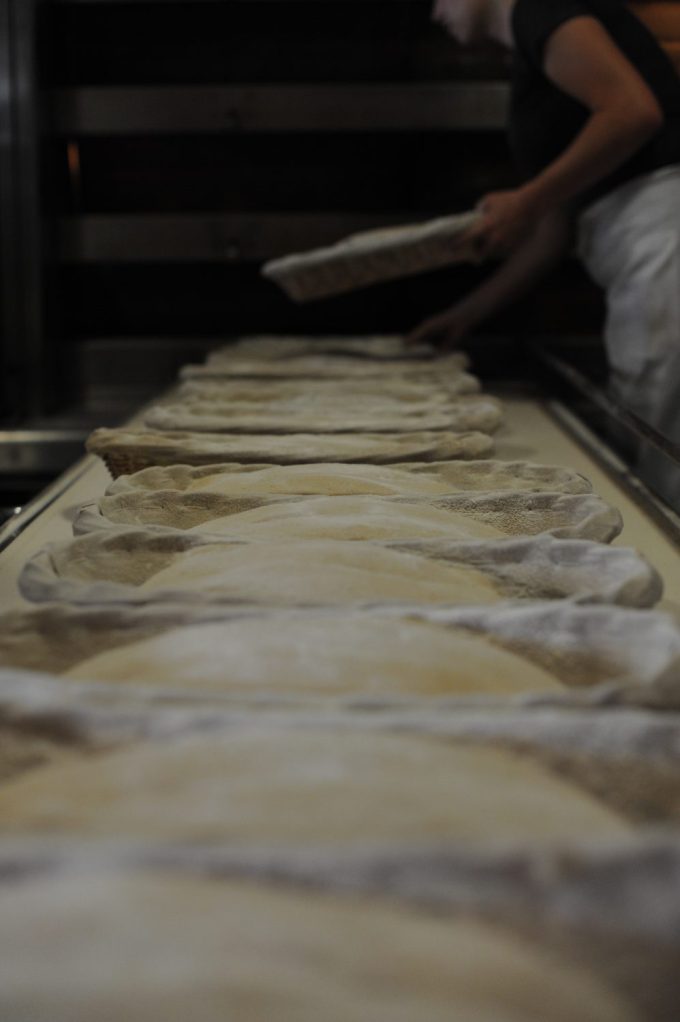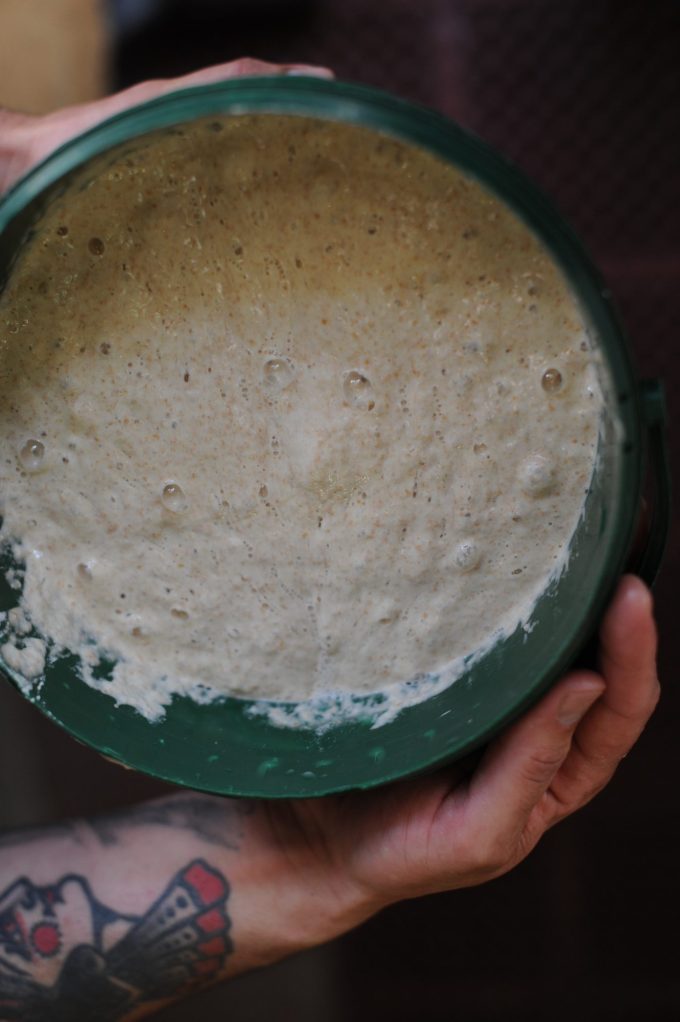Understanding San Francisco Style Sourdough
Origins and Characteristics
San Francisco style sourdough is famous for its unique flavour, chewy crust, and airy crumb. This iconic bread traces its roots back to the Gold Rush era of the mid-1800s, when French bakers brought sourdough techniques to the region. The bread’s distinctive tangy taste comes from wild yeast and bacteria, particularly Lactobacillus sanfranciscensis, which thrive in the Bay Area’s climate.
Influential Bakeries and Bakers
Tartine Bakery and Chad Robertson Tartine Bakery, founded by Chad Robertson and Elisabeth Prueitt in 2002, is a cornerstone of San Francisco’s sourdough scene. Robertson’s meticulous approach, focusing on long fermentation times and high hydration doughs, has set a new standard in artisan bread. His book, “Tartine Bread,” offers detailed insights into his baking techniques and philosophy, inspiring bakers worldwide.
The San Francisco Baking Institute Established by Michel Suas in 1996, the San Francisco Baking Institute (SFBI) has significantly contributed to the city’s bread-making culture. The SFBI provides professional training and education, blending traditional methods with modern techniques, and has trained countless bakers in the art of sourdough.
Steve Sullivan and Acme Bread Company Steve Sullivan founded Acme Bread Company in 1983, pioneering the artisan bread movement in the Bay Area. His dedication to using high-quality, locally sourced ingredients and traditional baking methods has earned Acme Bread a loyal following and inspired many to pursue excellence in bread making.
Kathleen Weber and Della Fattoria Kathleen Weber’s Della Fattoria, based in Petaluma, is another esteemed name in artisan bread. Starting from humble beginnings in her home kitchen, Weber’s breads caught the attention of prestigious clients, including Thomas Keller’s French Laundry. Her bakery, known for its rustic and flavourful loaves, has become a staple in the Northern California food scene. Weber’s journey, detailed in her book “Della Fattoria Bread,” underscores her commitment to quality and tradition?.



The Science Behind the Sourdough
San Francisco style sourdough owes its characteristic sour flavour and complex texture to a slow, or “retarded,” fermentation process. This involves fermenting the dough at lower temperatures for extended periods. The longer fermentation allows wild yeast and bacteria more time to break down the carbohydrates and proteins in the flour, producing acetic and lactic acids. These acids not only contribute to the bread’s tangy flavour but also enhance its shelf life and nutritional profile.
The Art of Baking San Francisco Sourdough
The dough undergoes a series of stretches and folds to develop gluten strength, followed by a long, slow fermentation to allow the flavours to mature. The high hydration levels contribute to the bread’s open crumb structure and chewy texture. Finally, the dough is baked at a high temperature to achieve a dark, caramelised crust that is both crispy and flavorful.
The sucesss has led to the Erosion of Local Bread Traditions
In many ways I feel that San Francisco style sourdough is so iconic that I came to epitomise artisan bread, especially with the rise of Sourdough on Social during the pandemic on social media and the style whilst it has elevated global artisan bread, it has simultaneously negatively impacted local bread traditions and style. San Francisco style bread is heavily reliant on white roller milled flour to get he crumb structure and, as San Francisco style sourdough gained international acclaim, many local bakers started to adopt its methods and characteristics to meet consumer demand. This shift has had several impacts that I have seen first hand across the world, with key bakeries in each city mimicking the style I have seen:
- Homogenisation of Bread Varieties: The distinct qualities of regional breads, developed over centuries and reflecting local ingredients and cultures, have begun to diminish. I have witnessed many bakers replacing traditional methods and recipes with those inspired by San Francisco sourdough, leading to a more uniform bread culture globally.
- Loss of Traditional Techniques: In my opinion traditional bread-making techniques, which often involve unique fermentation processes and local grains, are at risk of being forgotten – especially bread that are wholegrain. These methods not only contribute to the diversity of flavours and textures in bread but also support agricultural biodiversity by promoting the use of local grain varieties so this posses a double loss of local grains and traditions .
- Economic Impact on Local Bakeries: Small, traditional bakeries may struggle to compete with the trendy fashionable cool appeal of San Francisco style sourdough. The trend setters are powerful influences, and as books, and sales are lined to the trends in baking the flour, and resources required to produce this type of bread, including roller milled processed can mean that demand for local breads drop off and some local bakers this loss of demand forces hem to either change or close.
A Victim of Its Own Success
The widespread adoption of San Francisco style sourdough has, paradoxically, both saved and damaged the bread culture and while it has elevated the standards of artisanal bread making, it has also contributed to the erosion of local bread traditions and the homogenisation of global bread culture



